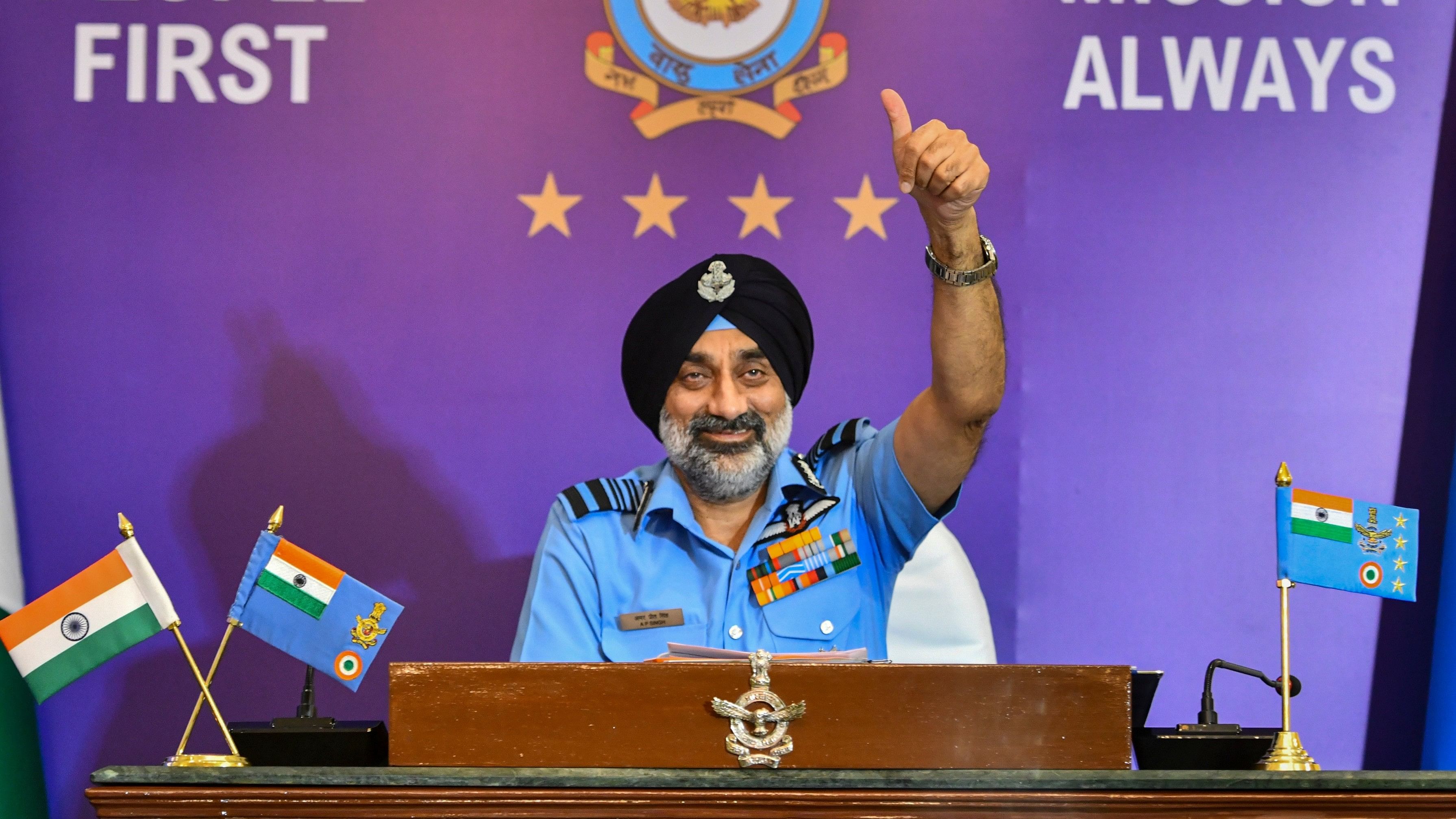
Chief of the Air Staff (CAS) Air Chief Marshal Amar Preet Singh addresses a press conference, at Akash Air Force Mess.
Credit: PTI photo
New Delhi: The Indian Air Force lags behind its Chinese counterpart in getting new hardware and producing aircraft at home, Air Chief Marshal AP Singh said on Friday, flagging how the force never received the Tejas LCA (Light Combat Aircraft) in time and the plans to buy fighter jets from abroad didn’t materialise in the past two decades.
“As far as technology is concerned, we may not be so good as of now (compared to China). We have lagged. On production rates, we are way behind. We need to catch up with that. But we are way ahead of them as far as people behind the machine are concerned,” the Chief of the Air Staff said.
While the first Tejas LCA Mk-1 was delivered in 2016, the Hindustan Aeronautics Limited delivered only 38 aircraft so far. The IAF placed a subsequent order of 83 aircraft and the first from that lot is yet to be ready.
HAL said the delay was because of the US arms major General Electric’s failure to supply the engines in time. Once the engines are delivered, the firm will take about a month to deliver the first aircraft to the IAF.
The defence ministry has cleared the purchase of another 97 Tejas LCA and HAL opened a third production line at Nashik so that the company can produce 24 aircraft in a year. But the progress is slow due to non-availability of engines.
Air Chief Marshal Singh said the first flight of the long-awaited Tejas Mk-2 was scheduled in October next year and the R&D phase was to end by December 2027, paving the way for the home-grown advanced aircraft’s induction in 2028.
“If these timelines are met, then we are not in too bad a situation. Our squadron strength should not go down below 30,” he said.
The IAF has a sanctioned strength of 42 squadrons, but currently it has only 30 squadrons. The strength may go down further if new aircraft don't come in time after the retirement of the last two squadrons of MiG-21s.
On the long awaited procurement of 114 multi-role fighter aircraft, he said a decision (by the government) should happen, but a certain number of aircraft has to be manufactured in India for a secured future.
The Narendra Modi government’s failure to realise the MRFA programme came after a decade of struggle by the Congress-led UPA to finalise the 126 medium multi-role combat aircraft.
As a consequence, the IAF doesn’t have a replacement of the legacy jets like MiG-21, MiG-23 and MiG-27 even after 20 years of planning.
China on the other hand has rapidly expanded its air assets and improved the infrastructure. The Chinese air force and naval aviation together constitute the largest aviation forces in the Indo-Pacific region and the third largest in the world, with over 3,150 total aircraft of which nearly 2,400 are combat aircraft.
The IAF chief said a proposal to have six more indigenous airborne early warning systems, fitted onto Embraer aircraft, was to go shortly to the Defence Acquisition Council for approval. Discussions are also ongoing with Airbus for more such airborne surveillance systems.
